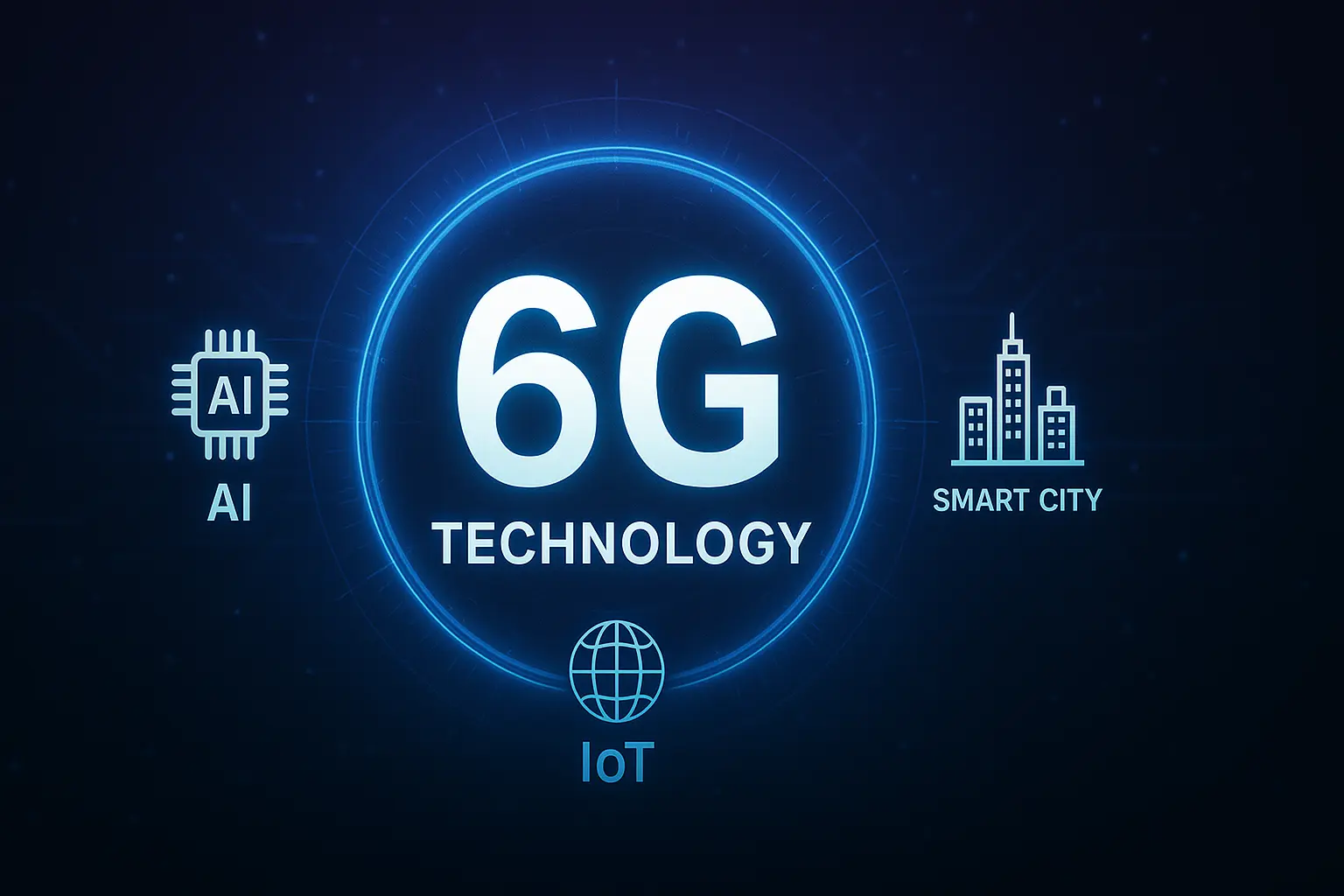Over the last two decades, mobile communication has advanced at lightning speed: 3G introduced mobile internet, 4G enabled video streaming and social media, and 5G brought real-time cloud gaming, autonomous vehicles, and IoT ecosystems. Now, the global tech community is turning its attention to 6G, expected to roll out commercially around 2030. Far from being a simple upgrade, 6G represents a revolutionary leap that could redefine how humans interact with the digital and physical worlds.
What is 6G?
6G, or sixth-generation wireless communication, is the successor to 5G. It aims to deliver ultra-fast speeds (up to 1 Tbps), extremely low latency (sub-millisecond), and massive device connectivity. Unlike 5G, which focused primarily on speed and network capacity, 6G aspires to merge the physical, digital, and biological worlds through the integration of AI, edge computing, and advanced sensors.
According to IEEE Spectrum, 6G networks will rely heavily on terahertz (THz) frequencies, providing unprecedented bandwidth and enabling entirely new categories of applications.
Key Features and Innovations of 6G
- Terahertz Spectrum – going beyond the millimeter waves of 5G.
- Up to 1 Tbps Speeds – 100x faster than 5G, enabling holographic communication.
- Ultra-Low Latency – near-instant responsiveness for critical operations.
- AI-Native Networks – self-optimizing and self-healing infrastructures.
- Massive IoT Connectivity – billions of devices seamlessly connected.
- Immersive AR/VR/XR Integration – from holographic calls to real-time collaboration.
Applications of 6G
Holographic Communication – replacing video calls with 3D holograms in real time.
Fully Autonomous Vehicles – instant communication between cars and infrastructure.
Smart Cities & Digital Twins – real-time simulation of entire cities for planning and efficiency.
Healthcare – remote robotic surgeries with ultra-low latency.
Metaverse Expansion – 6G as the foundation of large-scale virtual environments.
For more examples of practical applications, check our Guides & Tutorials.
6G vs 5G – What’s the Difference?
While 5G already provides high speeds and supports IoT, it is limited by spectrum and infrastructure. 6G will go further by:
Leveraging higher THz frequencies for exponential bandwidth.
Supporting 100x more devices per square kilometer.
Delivering global coverage via satellite integration.
As TechRadar notes, 6G will likely serve as the backbone of the Internet of Everything (IoE).
Challenges Ahead
- Infrastructure Costs – building THz-compatible towers and satellites.
- Energy Demands – balancing ultra-fast networks with sustainability.
- Health & Security Concerns – mirroring debates around 5G.
- Global Standardization – harmonizing regulations and frequency allocations.
When Will 6G Be Available?
Industry experts forecast that 6G will launch around 2030, with early trials expected in the late 2020s. Major players like Samsung, Huawei, Nokia, and Ericsson are already leading research, while governments in the US, EU, China, and Japan have launched dedicated 6G initiatives to gain an edge in the global tech race.
Why 6G Will Transform the Future
6G is not only about faster speeds—it represents a paradigm shift toward ubiquitous intelligence and hyper-connectivity. By merging AI, IoT, extended reality, and edge computing, 6G could redefine human-technology interaction, blurring the line between physical and virtual reality.
The Global Race for 6G
6G is not just a technological milestone; it has become a geopolitical race among the world’s leading nations. The United States, China, South Korea, Japan, and the European Union are investing billions of dollars in research and development to secure an early lead. This competition goes beyond faster smartphones – it is about dominating the future digital infrastructure that will support defense systems, industrial automation, and international communications.
China has already launched several experimental satellites to test 6G capabilities in space, while the European Union has initiated the Hexa-X project, led by Nokia and Ericsson, to explore terahertz communications. The United States, through its Next G Alliance, is focusing on securing patents, establishing standards, and ensuring North America’s leadership in the global rollout. South Korea and Japan, both pioneers in 5G, are also taking aggressive steps to remain at the forefront of 6G innovation.
The outcome of this race will determine not only which countries lead the next digital revolution but also who controls the standards, patents, and infrastructure that will shape global communications for decades to come.
Conclusion
6G is far more than a technological update – it is a paradigm shift that promises to integrate the physical and digital worlds in ways that were once science fiction. With its ultra-fast speeds, near-zero latency, and AI-driven networks, 6G has the potential to transform healthcare, education, communication, and entire industries. At the same time, the massive investment required, combined with challenges in energy consumption, standardization, and security, means that the road to 6G will be as complex as it is exciting.
As the world edges closer to 2030, the anticipation surrounding 6G reflects humanity’s relentless pursuit of progress. Just as 4G fueled the rise of mobile apps and 5G unlocked new levels of real-time connectivity, 6G will define the next digital era. It will not only reshape how people connect, but also how societies function and how economies grow in a hyper-connected future.
For more updates on future technologies, check our News section, and for in-depth product analyses, visit Reviews.
